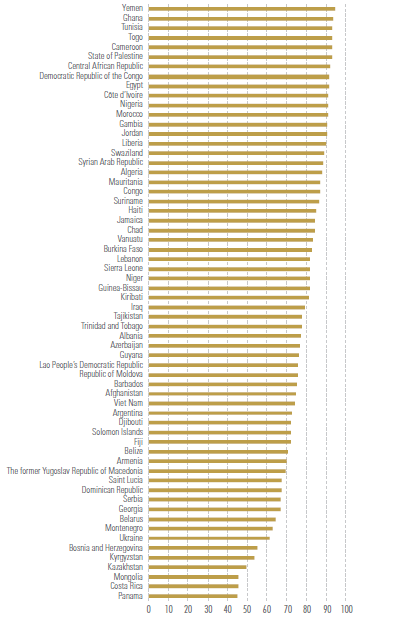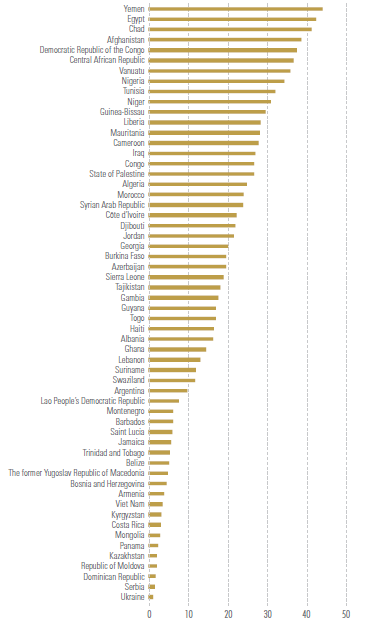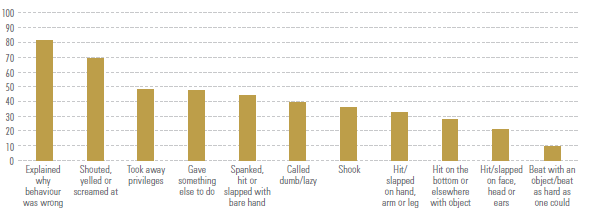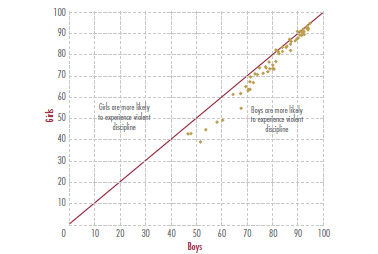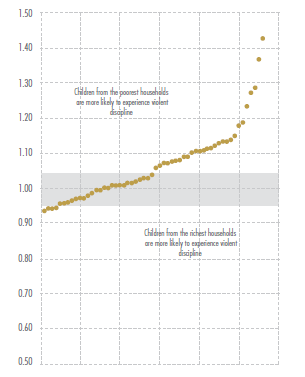Child discipline is an integral part of child-rearing that teaches children self-control and acceptable behaviour. All too often, however, children are raised using methods that rely on physical force or verbal intimidation to punish unwanted behaviours and encourage desired ones. In many cases, rather than being a deliberate disciplinary choice, such violent methods are used as a result of parents’ anger and frustration, or lack of knowledge of non-violent responses. Violent discipline can take two forms: physical (or corporal) punishment and psychological aggression; both types are violations of children’s rights. Physical discipline and psychological aggression tend to overlap and frequently occur together, exacerbating the short- and long-term harm they inflict.The consequences of violent discipline range from immediate effects to long-term damage that children carry well into adulthood. Moreover, research findings suggest that even mild forms of physical discipline are harmful to children.
DATA SOURCES
Comparable data on child discipline are mainly available from Multiple Indicator Cluster Surveys (MICS). The MICS include a standard set of questions covering different disciplinary methods, including nonviolent forms of discipline, psychological aggression and physical means of punishing children. The child discipline module was included for the first time in the third round of MICS (MICS3, mainly conducted in 2005─2006). Data on child discipline collected through MICS were available for 43 countries as of January 2014. Some Demographic and Health Surveys (DHS) and other national household surveys have also collected the standard, or modified, versions of the MICS child discipline module.
The child discipline module used in MICS is adapted from the Parent-Child Conflict Tactics Scale (CTSPC),[1] which is an epidemiological instrument used to assess the treatment of children. Psychological aggression refers to the action of shouting, yelling or screaming at a child, as well as calling a child offensive names, such as ‘dumb’ or ‘lazy’. Physical (or corporal) punishment is an action intended to cause physical pain or discomfort, but not injuries. Physical punishment is defined as shaking the child, hitting or slapping him/her on the hand/arm/leg, hitting him/her on the bottom or elsewhere on the body with a hard object, spanking or hitting him/her on the bottom with a bare hand, hitting or slapping him/her on the face, head or ears, and beating him/her over and over as hard as possible.
The nonviolent disciplinary practices included in the child discipline module are: 1) explaining why a behaviour is wrong, 2) taking away privileges or not allowing him/her to leave the house, and 3) giving him/her something else to do. Respondents are also asked whether they believe it is necessary to use physical punishment to raise children.
When it was first implemented in MICS3, the child discipline module was administered only to mothers/primary caregivers, who were asked whether any of the disciplinary methods covered in the module had been used by any member of the household during the month preceding the interview. Beginning with MICS4, the methodology was changed: Any adult household member, not just the mother or primary caregiver, can now respond to the questions on child discipline. This means that data on child discipline collected in MICS3 are not directly comparable with data collected in subsequent rounds for any given country.
MAIN INDICATORS
In the third and fourth rounds of MICS, the standard indicator referred to the percentage of children aged 2 to 14 years who experienced any form of violent discipline (physical punishment and/or psychological aggression) within the past month. Beginning with the latest round of MICS (MICS5, to be completed by 2015), the age group covered was expanded to capture children’s experiences with disciplinary practices between the ages of 1 and 14 years.
MICS MODULE ON CHILD DISCIPLINE
MICS surveys have a standardized module on child discipline.
Download the MICS module on child discipline (PDF)
[1] Straus, M.A., et al., ‘Identification of Child Maltreatment with the Parent-Child Conflict Tactics Scales: Development and psychometric data for a national sample of American parents’, Child Abuse and Neglect, vol. 22, 1998, pp. 249─270.


